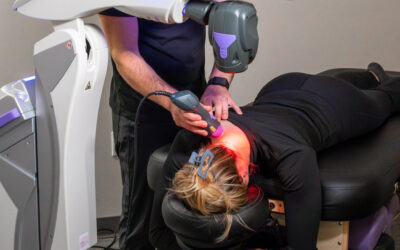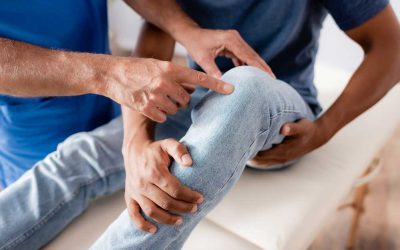In this blog, we will do our best to provide simple solutions to what sometimes seem like complex issues with shoulder pain.
I don’t want this blog to be a disservice to anyone, so we should start by saying that, all of the answers to improving outcomes to shoulder pain couldn’t possibly be communicated in one blog post.
That’s why we, at Tangelo Chiropractic + Rehab, are here for you to provide answers in the clinic.
In the blog, we will discuss:
- What are the possible causes of shoulder pain when lifting your arm?
- How to avoid (or temporarily avoid) the pain while lifting
- How to find long-term relief to your shoulder pain.
The first thing to know is that nobody’s impervious to pain. No matter how strong, mobile, educated, or conditioned you are, pain will likely come knocking at your door.
However, what matters is recognizing that pain is often a symptom of either dysfunction or just your body’s way of telling you that you did too much too soon.
Therefore, that injury that seemed to come out of nowhere is your body’s way of saying, “I would like a change!”
Possible Causes of Shoulder Pain (While lifting your arm)
Your shoulder is a ball and socket joint that is supposed to be extremely mobile and strong enough to control that mobility. Your shoulder blade needs to be able to move smoothly to assist the shoulder with harder tasks and/or heavier lifting.
Although the shoulder blade gets blamed for pain much of the time (trust me, it’s perfectly normal for your shoulder blades to NOT be symmetrical and isn’t likely the sole cause of your pain), your shoulder needs to also be able to move itself independently of your shoulder blade.
That’s where having a strong (enough) rotator cuff comes in. If you’re pulling something close to you, or pressing or pushing something away from you, you get to use larger muscle groups to assist with the activity, not leaving your rotator cuff on an island by itself.
On the other hand, picture holding something out in front of you or to the side, solely relying on your rotator cuff to do all of that work, that’s a long lever to control! If this is similar to the onset of your shoulder pain, more than likely, one of your rotator cuff tendons or musculature around your shoulder blade just doesn’t have the capacity to do what you want it to do at the moment.
What about Posture?
Some of us spend most of our day in a position where our hands are resting on a keyboard (or holding a phone) with our shoulders rotated forward, mid-back rounded and head jutted forward. I want to be clear that this IS NOT a bad position to be in. But, any position for too long isn’t going to feel good and can make getting into other positions a more uncomfortable task than it needs to be.
Since it’s not realistic to quit using your phone or keyboard, it’s important to actively rest your shoulders when you stand back up and walk around. To do this, make sure your thumbs are pointed forward.
Temporary fix to posture
When your thumbs are turned in, guess what else is turned in?
Your shoulders!
When your thumbs are pointed forward, your shoulders now have the chance to retract back…and when your shoulders are back…your head naturally resets, and VOILA, better posture!
OVERHEAD PRESS and SHOULDER PAIN
In addition to being more mindful of your posture during the day, it’s important to know that any exercise can be modified so you can continue to enjoy all that fitness has to offer.
On that note, let’s talk about the overhead press, as it’s a common exercise that can expose underlying shoulder impingement, or more accurately, SAPS (Subacromial Pain Syndrome).
Which is just a fancy way to say that you’re having discomfort around the front of your shoulder with overhead movements.
Tendons don’t get better with rest, so it’s important to continue doing what you can with your shoulder, and getting advice from a health care professional to find other treatments/exercise interventions to ensure that you can appropriately recondition that tendon and your shoulder as a whole.
Don’t let the term “impingement” scare you.
Everyone has some sort of impingement on structures in the shoulder, it’s a normal thing. It’s just whether or not the shoulder has become sensitive from doing too much too soon, or has been exposed to a range it wasn’t used to.
Suppose you are currently dealing with shoulder discomfort or any other shoulder ailment that is not getting better. In that case, it’s worthwhile to make an appointment with our Portland or Seattle chiropractic team at Tangelo so we can discover the cause of the pain, treat the issue and get you back to living your best life.
3 EXERCISES FOR SHOULDER PAIN
The below section is NOT a catch-all section of exercises for shoulder pain.
This is just a good start to addressing some of the issues mentioned above.
1) RNT OVERHEAD PRESS
This is a wonderful exercise — here are the basics of how it works.
When you apply tension on the straps, the pec minor has to relax because the muscles on the back of the shoulder and lower trap have to turn on to keep the straps taught through the movement.
Therefore, all you have to think about is keeping the “elbow under the wrist” and push through the good burn. You can also play with different pressing angles to avoid any position that might be causing you pain.
2) LANDMINE PRESS
(as an alternative to strict overhead pressing):
The Landmine Press can be a nice alternative to a strict overhead press. The change in the angle makes it easier to be able to rely more on musculature around your shoulder blade to help support your rotator cuff.
3) FULL-CAN SHOULDER EXERCISE
If you pick something up and lift your arm out in front of you, most directions have similar loads into your rotator cuff. The full-can shoulder exercise allows you to find a tolerable exercise to recondition parts of your rotator cuff to be able to tolerate loads out in front of you, where you’re relying more heavily on your rotator cuff by itself.
You don’t have to live with shoulder pain.
Remember, you don’t have to live with shoulder pain. If you live in the Seattle, WA or Portland, OR area, contact one of our local Tangelo Chiropractic Centers.


